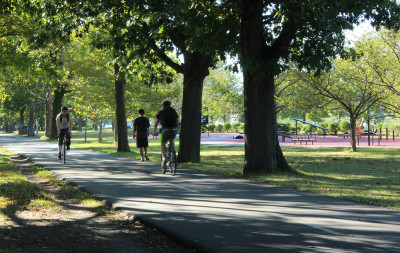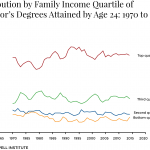
Residents in the Greater Boston area may soon have access to a 200-mile path, spanning from the Mystic River north of the city to the Neponset River south of it.
LivableStreets Alliance, a nonprofit organization that promotes safe transportation in urban Boston, announced an initiative Thursday called the Emerald Network , which will connect 100 miles of existing greenways while supporting accessibility and safety for those who use them.
Amber Christofferson, the Greenway Links Initiative project manager for the LivableStreets Alliance, said the project is an effort to build on Boston’s history of scenic transportation and to support its active population.
“Boston has a historic legacy of greenways and linear parks, which we appreciate,” said Christofferson. “But our current systems could be better connected to continue work that has been done for 100 years.”
This program comes just over a month after a cyclist was killed at the intersection of Beacon Street and Massachusetts Avenue, Christofferson said. A citywide push for improved infrastructure to serve walkers and cyclists has become more of a priority following a number of cyclist fatalities in traffic accidents, she said.
Organizations such as Boston Bikes and the Boston Cyclists Union have also pursued various programs to provide opportunities for citizens to lead healthier lives and have safer options for outdoor recreation in all Boston neighborhoods.
Doug Johnson, community organizer for the Boston Cyclists Union, said making Boston a home for cyclists has been the goal of organizations around the region for some time now.
“We are excited to see this happen because the program’s plans incorporate ideas that advocates have been talking about for a really long time, including some from programs we have developed for bikers,” Johnson said. “It’s a great complement to a lot of things people want and what else is already going on.”
Upcoming housing developments in communities including Boston, Cambridge, Brookline and Somerville could mean extra strain on roads in the city, Johnson said, so there needs to be alternate ways to get around.
Johnson said the group is looking forward to increased support and positive change in its work to decrease fatality rates for bikers around the city.
“We have been really happy to see the city is committing to things like the Vision Zero initiative to eliminate all traffic fatalities, which is great and should change how people feel about using their bikes,” Johnson said. “Hopefully people can get to where they want to go on a bike and not feel like they are taking their lives in their hands and avoid dangerous situations.”
Several residents said they look forward to the impacts the new pathway can have.
Katie Gardner, 31, of North End, expressed how scary it is moving through Boston, so she appreciates efforts to make non-motorized transportation safer.
“Moving through the city is honestly kind of hard because the drivers are really aggressive and all,” she said. “It’s hard to even walk and it’s also hard to bike, so it’s cool if they’re trying to make it safer.”
Steve Marois, 27, of Allston, said a community effort is necessary to improve safety for everyone.
“As a pedestrian, sometimes I get frustrated with bikers, but I can imagine it’s just as frustrating for bikers to interact with drivers and pedestrians, so Boston needs to be better about providing safe bike paths,” he said.
Greg Hum, 30, of Cambridge, said those who choose to use bikes as transportation should be made more of a priority.
“There is a lot the city could do to make it safer for bikers, like changing policies on the road or educating drivers to better interact with bikers,” he said. “We interact with this infrastructure every day, so it should be designed in a way that makes sense for everyone.”
Olivia Quintana contributed to the reporting of this article.




